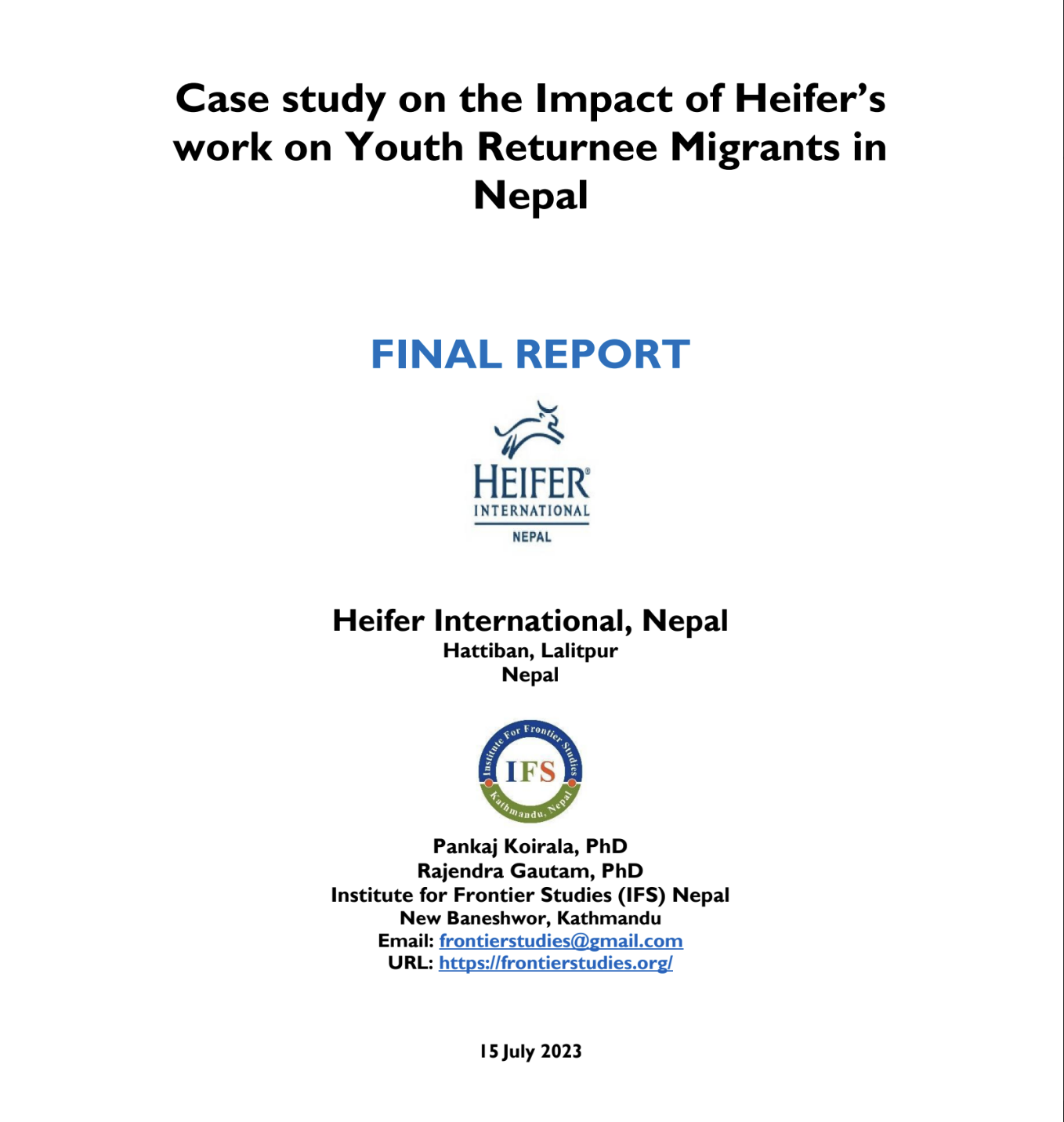Case study on the Impact of Heifer’s work on Youth Returnee Migrants in Nepal
Migration has emerged as an important phenomenon in many developing countries and stand as one of the major sources of livelihoods, improving people’s education, health, and standard of living. In the context of Nepal, it plays a significant role in various social, economic, and political contexts. The country has a long history of migration, with a significant portion of its population engaging in internal, seasonal, and international migration. In several ways, migrants have been contributing to the economy of their home places, such as through remittance (or financial capitals), experience, skills, knowledge, network (human capitals), along with technologies, which is either transferred on a frequent basis and/or when they return home. As a result of remittance, left-behind families’ quality of lives, such as diets, nutrients, and health, has improved, and children’s educational level has improved when their real income has increased. In contrast, migration and remittance have also brought several consequences to societies, such as labor shortage, affecting the agricultural sectors (Qian, et. al., 2016; Raju, et. al., 2014). These consequences have resulted in barren lands, higher wage rates, contributing to the already high cost of production in several sectors, including agriculture, and posed difficulties to reintegrate into the rural economic system being away from home for a longer period. Similarly, migration and remittance have also been observed to be the major source to push domestic migration, escalating the issue further. These observations and facts highlight the issues around migration and remittance. Generally, these issues have been observed at various levels: individual, household, societal, and environmental levels (Ghimire, et. al., 2021; Raju, et. al., 2014). At an individual level, migrant workers’ health and safety remain a vital issue that substantial workers are found to die, suffer severe injuries, and have illness, presenting the persistent issues of health services in host countries (MOLESS, 2022).
At household level, migration has been linked with increased women’s work-load, declined cares required for children and senior citizens, and resulted in poor mental health of left-behind family members. At societal level, the process has been linked with the rapid decline of long-existed social bonding and bridging, leading toward a poor social capital formation with the increased out-migration of populations that are required for a sustained economy of the country (Gartaula, et al., 2012; Jacquet et al., 2019). Similarly, migration is reported to pose negative impacts on labor-based agricultural and nature- based livelihoods in many parts of developing countries, including Nepal, as capital overtakes labor when it becomes scarce (Jacquet et al., 2015).
In recent years, however, several reports indicated the reverse trends of migration where migrants tend to return home with an intention to stay in their places, especially amid COVID-19 or after that (MoLESS, 2022). The trend indicates the tendency of migrants to reintegrate in the process, increasing aspirations, expectations, and demands from government and non-governmental organizations by seeking information, goods, and services related to potential livelihoods measures that they can initiate and continue to earn money. Given these states of affairs, several local governments in various districts have initiated programs and processes to reintegrate them by providing goods and services necessary for them.
Read full documents here.


